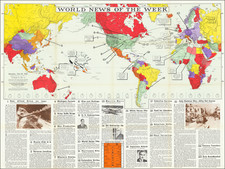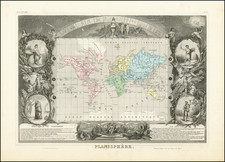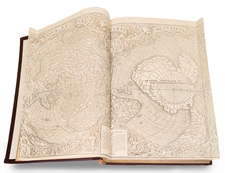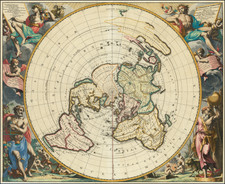This "Mercury Orbit Chart (MOC-6)," dated February 1963, is an essential artifact from NASA's Mercury Program, the United States' first manned spaceflight initiative, which aimed to orbit a man around Earth and safely return him. Published by the USAF Aeronautical Chart and Information Center and lithographed by ACIC in March 1963, this chart intricately maps the Earth with helical patterns of the spacecraft's orbit, providing a visual guide to the trajectories and key operational zones of the Mercury missions.
During the height of the Cold War, the Mercury Program (1958-1963) was a symbol of national pride and technological prowess, marking America's foray into manned space exploration. This chart was conceived in an era when space exploration was in its nascent stages, and every mission contributed significantly to our understanding of space travel. The Mercury missions laid the groundwork for the later Gemini and Apollo programs, each an incremental step toward lunar exploration.
In this detailed chart, the Earth is depicted with superimposed helical orbit patterns, indicating the trajectories of the Mercury spacecraft. These patterns are a testament to the precision required in space navigation and illustrate the complex relationship between terrestrial and celestial mechanics. The chart includes several critical elements like "Planned Retro-sequence Initiation Points," "Mission Control Site (coverage limits)," and "Primary (Go-No Go) Landing Areas," each crucial for mission planning and execution.
Furthermore, the chart delineates "Site with Radar only (coverage limits)" and "Planned Landing Areas," illustrating the strategic locations essential for communication and recovery operations. The scale at the Equator, marked as 1:52,000,000, highlights the expansive scale of these operations.











![Western Hemisphere. Eastern Hemisphere. [showin the Republic of Texas]](https://storage.googleapis.com/raremaps/img/small/82886.jpg)

![Hemisphere Occidental ou du Nouveau Monde . . . [and] Hemisphere Oriental ou de L'Ancien Monde . . . MDCCLXI](https://storage.googleapis.com/raremaps/img/small/64273.jpg)
